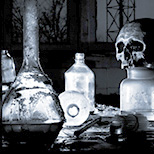Health Risks of Synthetic Drugs
There’s a good chance that most parents are only familiar with a couple of types of synthetic drugs - Spice (also known as K2) and bath salts. The fact is that the list of dangerous, illicit synthetic drugs on the market continues to grow rapidly.
Abuse of these drugs is accompanied by many dangers, not the least of which is addiction and all the harm that goes with it. Besides that, there are many health risks involved in the use of these drugs - risks that the young people abusing them probably don’t know anything about.
To keep your children (or yourself) safe from injury or illness, it is vital that you know the health risks of abusing synthetic drugs.
A Short Introduction to Synthetics
What are these substances? Who makes them? A complete list of all the synthetics being sold and abused would include hundreds of items. In the information that follows, you will find the main categories of drugs and the most popular synthetic drugs that are being abused. The list of substances changes almost daily. According to the United Nations’ World Drug Report for 2013, more than 250 “new psychoactive substances” have been found on the international market, 158 of them in the US.

Synthetics drugs are formulated in chemical and pharmaceutical labs around the world. Many substances were originally developed as possible new prescription drugs but were shelved because of bad side effects or because they did not do the job they were intended to do. Chemists have taken these original formulas and duplicated them or modified them slightly to make them into new substances that might not yet be illegal, depending on the national and local laws in the area where they will eventually be sold.
Inventors of the drugs were often staff in the labs of major pharmaceutical companies. Now, the drugs are mostly manufactured in illicit plants in India, China or Pakistan, countries known for their sophisticated chemical manufacturing industries. The drugs are then smuggled to other parts of Asia or Europe, Australia, Africa or North America. A few pounds of raw chemicals can bring hundreds of thousands of dollars in an affluent marketplace like the US.
These drugs can be purchased from drug dealers who work with smugglers, or they can easily be purchased online. There are many websites offering to sell these “research chemicals” to anyone with the money to buy them.
Most of these substances cannot yet be detected on drug tests which is why many people want to use them. Some branches of the military have had problems with soldiers or sailors abusing these drugs, but now there are drug tests for the most popular of these substances. Teens, people on probation, people who may be drug tested for their jobs - these new synthetics appeal to these groups and others want to get high without getting busted by police or employers. Lawmakers work hard to keep the laws current with the new drugs on the market but right now, there are just too many new substances being developed and sold.
It should be emphasized that abuse of any of these drugs is accompanied by a severe risk of addiction with the inevitable decline in morals and character that go along with it. Serious mental disturbance can also occur at any time with most any of these drugs. But with most of them, there are also risks to health that a person abusing them may simply choose to ignore. You’re about to learn about those risks.
European Agency Provides Update to Synthetics List
In 2014, the European Monitoring Center for Drugs and Drug Addiction notified the public of a new, dangerous drug that was killing people in the UK and in Hungary. This drug was first seen on the market in 2012 and by 2014, had killed 26 people. The drug has different names – it may be called 4-methyl-euphoria or 4,4‘-DMAR. By any name, it is a killer.
At the time of this update, the drug was legal as it had not yet been included on lists of outlawed substances. It is a derivative of an illegal drug, D4-methylaminorex, that has an effect similar to methamphetamine.
Those who have died of this drug have manifested difficulty breathing, foaming at the mouth, high fever and cardiac arrest.
The drug can be powdered or in tablet form, and there is no reason that drug dealers could not put it in a liquid form as well. Since there is no safe way to identify the drug, the only safety is in being drug-free.
Horrific Harm Resulting from Synthetic Drugs
Any drug abuse is accompanied by danger. Those dangers could include overdose, addiction, loss of self-respect, damage to relationships with family, criminal prosecution, injury while impaired, and more. The potential for harm from abuse of synthetics is so drastic and cruel that every parent should be taking steps to explain the potential for harm to their children - very thoroughly, very specifically.
Here are some specific examples of the extreme and unpredictable damage caused from using these drugs: (Warning: This is nasty stuff.)
In Louisiana at the end of 2010, Dickie Sanders snorted bath salts, then became erratic, despondent and, finally, psychotic. Terrified by hallucinations, he cut his own throat while standing in the kitchen with his father. The wound was repaired but the 21-year-old managed to find a gun the next day and kill himself.
In 2011 in Washington, two young parents killed their young son and then drove away. Their fast and erratic driving attracted the police who chased them until the father pulled over, shot his wife and then himself. Bath salts were found in the father’s pockets, in the car and in the home where the child was killed.
In August 2012 in New Jersey, a 33-year-old mother decapitated her toddler and then stabbed herself to death. She had smoked marijuana treated with PCP, a concoction currently street-known as ‘Wet,’ (because the joint is dipped in liquid PCP.)
In September 2012 also in New Jersey, a 31-year-old man high on PCP and marijuana broke into a neighbor’s home and cut the throats of two children, killing one of them.
In December 2012 in Texas, 17-year-old Emily Bauer smoked a substance sold as synthetic marijuana. It is commonly labeled as ‘Spice,’ advertised as incense or potpourri. Emily had a series of strokes that left her violently psychotic. Days later, swelling in her brain nearly killed her, leaving her blind and disabled.
In July 2013 in Taiwan, a 17-year-old boy took a new drug called the “N-Bomb” (technically ‘25I-NBOMe’). He became violently sick and delusional. He struggled with family trying to stop him, then dived off a high rise balcony to his death.
You certainly don’t need to tell your children these terrible stories. And in many cases, you should not.
‘Scare tactics’ sometimes inflame the imagination which simmers until it finally triggers a stimulus-response obsessive curiosity. Young people, after all, as well as many adults are now fascinated with the cult phenomenon of zombies and the undead, etc. There are popular television shows. There is Halloween. The Hispanic ‘Day of the Dead.’ This is all intended to be fun, fooling around today, but earlier in our civilization the fears generated by ‘witches’ and ‘demons’ sometimes led to social hysteria.
On the other hand, complex, toxic chemicals, unresearched for safety, known to create delusional or worse effects, being actively marketed to your children under the names ‘Spice’ or ‘K2’ or ‘Diesel’ (among other names) are another matter. This is a very serious matter for the health of your loved ones. Between 2010 and 2011 alone, U.S. emergency room visits from smoking Spice increased 2.5 times to 28,531.
Having a more informed understanding yourself, you do need to tell your children that use of these drugs can have FATAL consequences either for them or someone close to them.
